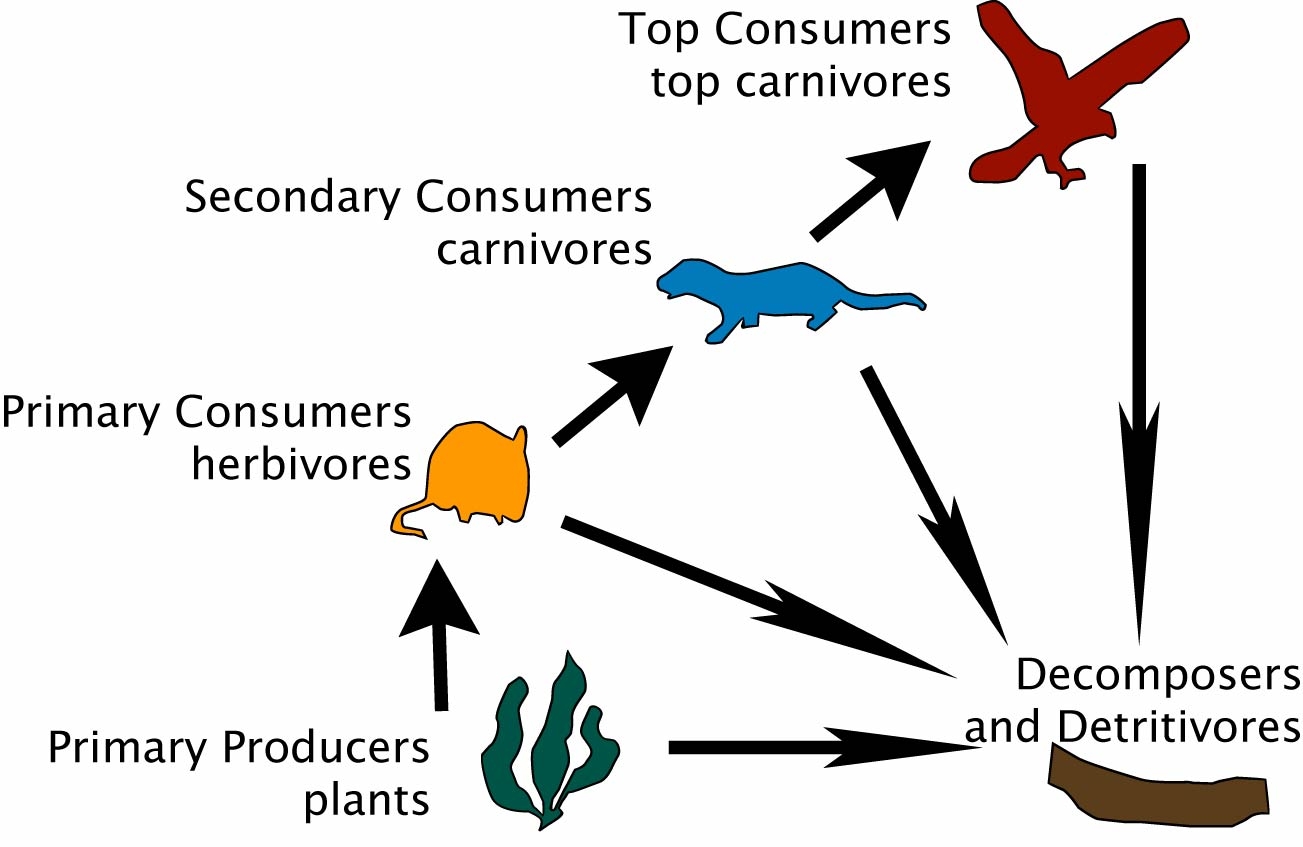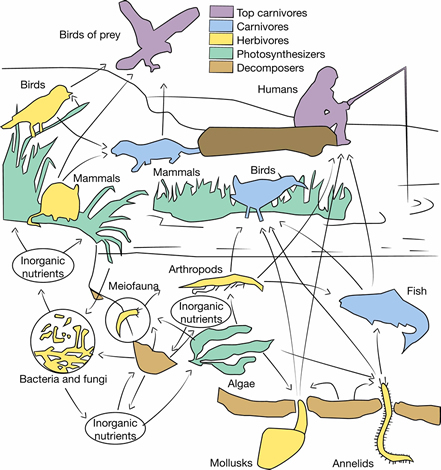 username@email.com
username@email.com
In this lesson, we will cover some of the basics of biogeography, another example of how different scientific disciplines can be more fully integrated to gain a deeper understanding of our world.
We reviewed some of the concepts of how evolution operates, namely natural selection. We also showed how humans have used evolutionary change to affect changes in our food crops and domesticated animals through many generations. Lastly, we showed how a field like horticulture was extrapolated to ask questions about inheritance that eventually led to a new breakthrough in the theory of evolution. We reviewed how Gregor Mendel’s pea plant experiments led to the discovery of a gene as the unit of heritability.
In addition to studying the intrinsic characteristics of species themselves, biologists also try to understand what led to the distribution of species we see on Earth today. The major factor that has affected how species are distributed is the motion of the Earth’s continents via plate tectonics.
The figure below shows how much the continents have moved over the past 250 million years or so. About 250 millions years ago, all of today’s continents were part of a single large land mass called Pangaea. Over time, they have slowly drifted into their present day locations.

The movement of organisms from one location to another is called dispersal. Causes of dispersal are wind, water, and living things. Many animals move from location to location on their own, but plants and small organisms usually need assistance. Winds can disperse seeds, spores of fungi, and very tiny organisms. Similarly, organisms that can float, swim, or cling to floating material are also dispersed by water. Some organisms can be dispersed under their own power or by other living things. For example, birds may eat berries in one location, fly to another, and deposit the seeds elsewhere in its waste. Plant burs can easily hitch rides on most animals and go everywhere the animal does. Humans have the largest affect on dispersing organisms. Human travel around the world accounts for such dispersal, some of which is intentional as when the Europeans took corn and tomato plants from central and South America back to Europe. Sometimes, human dispersal is unintentional as when insects, snakes, toads, or germs are carried to new places by an airplane traveler, in a ship’s ballast water, or other human transport. Several species that were transported to other locations by such means and survived in those new locations are called exotic species. They can often become problematic for the native species.
The same species are not located in all areas of the world due to limitations on their dispersal such as physical barriers, competition, and climate. Physical barriers such as water, mountains, and deserts are difficult for many organisms to cross. For example, once Australia became isolated from the other continents, the ocean acted as a barrier to dispersal. When an organism enters a new area, it must compete for resources with the species already there. To survive, the new organism must find its own niche and if it cannot, competition is a barrier. Climate differences also limit dispersal. For example, the top of a mountain has a very different climate that the base. The base may be warm and dry allowing low bushes and cactus to thrive, part of the way up the mountain may be cooler and wetter, allowing large trees to thrive, while the top of the mountain may be very cold and windy, with thinner air, allowing only short, hardy plants to survive. Places with similar climates tend to have species that occupy similar niches. For example, most continents have large, flat, grassy plains that support various grazing animals. In North America, the large grazing mammals of the grasslands are bison; in Africa, they are wildebeests and antelopes; and in Australia, they are kangaroos — all grazers, originally isolated by continental drift.
Just as all the pieces in a puzzle all have individual roles in making the final picture, all organisms have an individual role in the movement of energy through its ecosystem. An organism’s energy role is determined by how it obtains its energy and interacts with other organisms. Each organism in an ecosystem fills the role of a producer, a consumer, or a decomposer.
The sun provides most of the energy to most ecosystems. Some organisms such as plants, algae, and some bacteria, capture the sun’s energy and store it as food energy for later use. Other organisms living near the deep sea vents utilize other forms of non-solar energy, and are able to live that way. Most organisms store food energy as fat or other biomolecules for later use. This kind of energy is called potential energy —or food energy stored and held for later use by an organism. The stored energy has a chemical potential for providing energy at a later time, much like potential energy in a physical-science application. Organisms use the stored energy from the sun to convert water and carbon dioxide from the environment into food (sugar) molecules via photosynthesis, and consume the energy to live. The energy being actively used by a plant or animal is called kinetic energy, much like energy of motion in a physical science application.
Living organisms follow the same rules of physics that all living and non-living objects do. With regards to energy, every organism is governed by the laws of thermodynamics. Thermodynamics is a study of the interaction between heat (thermo) and energy (dynamics).
The first law of thermodynamics states that energy cannot be created nor destroyed. This law applies to the chemical processes in all organisms. It says that the total energy of a system of an organism and its surroundings stays the same, although the form of the energy may change or the system may gain or lose energy to the surroundings. If an organism has stored energy, that energy may be used to produce heat energy in the organism as it moves or performs some task, and that expended energy in turn is released to the organism’s surroundings. Although energy has been transformed from one form to another, the total amount of heat between the organism and its surroundings always stays the same.
The second law of thermodynamics states that randomness in the universe always increases. This law means that all molecules will keep moving randomly until they reach a stable configuration. For example, gas molecules keep moving from organisms, cells, and everything in the universe, trying to achieve stable balance — even if the molecules must be chaotic (random) for a while.
An organism that makes its own food is called a producer. Producers provide all the food within an ecosystem. In some ecosystems, producers obtain energy from sources other than sunlight. One such ecosystem is found in the rocks deep beneath the ground. Some bacteria produce their own food by using the potential energy in hydrogen sulfide gas.
Some members of an ecosystem cannot make their own food and instead must feed on other organisms for energy. They are called consumers. Consumers are classified by what they eat. Plant eaters are called herbivores, such as caterpillars and deer. Consumers that only eat other animals are called carnivores, such as spiders and tigers. Consumers that eat plants and animals are called omnivores, such as many birds, bears, and most humans.
In an ecosystem consisting only of producers and consumers, the raw materials of life would remain locked up in wastes and the bodies of dead organisms. Luckily, there are organisms that take care of this problem and are called decomposers. Decomposers break down wastes and dead organisms and return the raw materials to the ecosystem. Decomposers are the recyclers of nature. While they obtain food for themselves, they also return broken down food molecules to the environment that can be reused by other organisms. Examples are mushrooms and bacteria.

The energy that enters most ecosystems from sunlight is converted to food molecules by producers and then eaten by the consumers. Finally, decomposers recycle it. The movement of this energy through an ecosystem is commonly shown in food chains and food webs.
A food chain shows only one path through which energy moves through an ecosystem. You do not eat only one thing every day and neither do most organisms. Most producers and consumers are part of many food chains simultaneously. Many overlapping food chains within one ecosystem are called a food web.

The stomach, heart, brain, and lungs are all organs in the human body. An organ is a structure that is made of different kinds of tissue; these tissues perform a specific function or group of functions. There are four types of tissue in the body: muscle, nerve, connective (bone), and epithelial (skin). Each organ performs a specific function and all work together in one large system.
The major organ systems that make up a human body are: